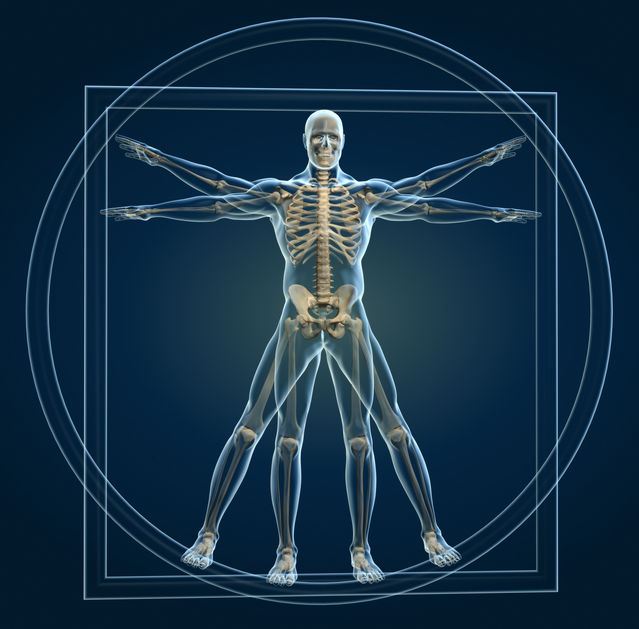
Ever since the publication of Rhonda Byrne's The Secret and the movie by the same title (2006), the Law of Attraction has been a popular theory in self-help and motivational literature. The Law of Attraction purportedly has ancient roots, but it can be most directly traced to prosperity writers like Napolean Hill (Think and Grow Rich, 1937), Wallace D. Wattles (The Science of Getting Rich, 1903), and Louise L. Hay (You Can Heal Your Life, 1984). Rhonda Byrne successfully repackaged the idea with immense success: the book remained at the top of The New York Times Bestseller List for 146 consecutive weeks, with tens of millions of copies in print in dozens of languages.

In order to evaluate the Law of Attraction, we need to describe the claims behind the theory. Thought is held to have a magnetic power, such that whatever we habitually think becomes reality. Even more powerful than thought is the emotional valence behind the words: the feelings that we project into the Universe (or God, or the subconscious) return to us. This is the principle of "like attracts like:" thoughts of abundance and well-being lead to good outcomes, while thoughts of lack and sickness lead to bad outcomes. We can change our lives by persistently thinking positively, and even call things into being by truly believing that they will come into our lives.
You can find many takedowns of the book on the web. Among the criticisms are that books like The Secret popularize erroneous notions about science, especially quantum physics, that prosperity thinking unfairly blames poor people for what are basically sociological realities (as in the recent Ben Carson comments that poverty is a "state of mind"), and that such theories could be harmful if they lead people to say, avoid conventional medicine or fail to practice normal financial planning. In other words, if you go around expecting miracles, you may more easily fall prey to hucksters selling snake oil.
All of these criticisms are fair enough, and any votary of the abundance literature would do well to keep them in mind. Skepticism serves an important purpose, like a philosophical release valve that keeps dangerous theories from overtaking our lives. And yet, conversely, we all want at least a dash of the fantastic, of the larger-than-life, of the unexpected in our lives. Without the expectation of good things that will happen in the near future, we lack the basic hopefulness necessary to get out of bed in the morning. Even if you think The Secret is bogus, it is worthwhile to find the grain of truth in it.
In 2011, I was asked to write a new edition of The Everything Guide to Meditation for Healthy Living, with my co-author and research partner, Dr. Ravinder Jerath. Dr. Jerath and I proposed what we called the "Dynamic Model of Consciousness." Here is a short summary of the theory and the ways that meditation affects consciousness:
Common sense says that the brain commands and controls the rest of the body, like a puppet master controls the strings of a puppet, or like a drill sergeant barks orders at cadets. The command-and-control idea of the brain has a certain amount of truth to it, but the reality is actually much more cooperative than this image allows. “Mind,” which actually includes more than just the brain, describes the ways that the body’s many systems interact with the brain and the environment to produce experiences.
The relationship between brain and body is by no means a one-way process: not only does the brain dictate to the body, but the body also dictates to the brain. It might be better to think of the body’s many systems and its immediate surroundings as a dense web of relationships. These relationships are non-local and dispersed, meaning that a change in any one area can affect the whole body. Even below the system level, cellular processes also have a certain logic and are affected by events taking place throughout the body. All of this means that any bodily process, whether healthful or harmful, can be altered by manipulating the body’s electrical and informational processes through meditation.
Think of your “mind” as a triangle consisting of the brain, your body, and the surrounding environment. Each of the three points in this system has a complex structure of its own. The brain has numerous processing centers. Neural elements extend downward into the heart and lungs, and, through the spinal column, reach every part of the body. Then there are the other processes taking place in the body: respiration, circulation, and digestion, for example, as well as endocrine and renal functioning. The organs, systems, and cells of the body execute trillions of functions every second, and the wondrous part of it all is that the vast majority of it happens without any conscious effort on the part of the rational mind.
That said, the thoughts that pass through your head and the emotions associated with those thoughts do matter and can affect all of these unseen processes to a profound degree. The quality of the environment certainly also affects consciousness and health. For example, depriving a person of a suitable and stimulating environment will impair social and cognitive development, just as a very rich environment will produce a rich intellectual and emotional life.
Some things lie outside of your control. You can’t alter your DNA, for example (at least not yet), and you have to put up with a certain amount of toxicity and stress as part of our modern, industrialized consumer lifestyles. You may even have persistent (though not inevitable) features of your personality that can be very difficult to overcome. Anger, depression, and anxiety have become invisible plagues in society, affecting almost every aspect of our common life. Given the state of the world today with the steady stream of bad news about the environment, economics, and politics, it might be tempting to just go along with the flow and forget about living a healthy, centered lifestyle.
Fortunately, meditation and deep, slow breathing (pranayama) can balance the triangle of body, brain, and environment, returning our experience of the world to a more neutral, peaceful state. The ancient wisdom of the world’s philosophies and religions as expressed in prayer and meditation can now be scientifically verified and understood physiologically. Prayer and breathing are proving to be a formidable force that can create natural sunshine within while thunderstorms and hail may be raging outside. Neurology, biology, medicine, and a whole variety of subfields describe the ways in which meditation works to an amazing degree of specificity, but here we simply want to capture the general outlines.
Dr. Jerath and I later published these findings in an academic journal, Frontiers of Human Neuroscience.
To bring this back to a discussion of The Secret, what happens in the mind does, indeed, color our experience of reality. Those who have experienced depression know that this disorder makes it extremely difficult to see anything worthwhile or interesting in the world. Someone who has an anxiety disorder can't just "get over it" without counseling and perhaps pharmacological treatment. We can say that there is a feedback loop between body, brain, and environment that is self-reproducing and non-linear. The purpose of meditation is to interrupt this feedback loop, to break the cycle of negative thoughts and return the mind-body-environment system to equilibrium.
Because of the persistent nature of our thoughts, our habits of mind, the negative cast of mind can be extremely difficult, but not impossible, to overcome. A one-off practice of meditation will not be sufficient to overcome years or decades, perhaps generations of fatalistic thinking. Dr. Jerath and I recommended meditation, combined with the practice of pranayama (deliberate, controlled breathing) on a regular basis as a means of overcoming anxiety and depression. This is a complementary practice to mainstream medicine and not a substitute for seeking professional help when necessary.
But what about the more fantastic claims of The Secret, that one can have mansions and fast cars and really anything—merely by believing it to be so? Even given the massive inequalities of our society and the extreme social stratification of contemporary America (and other nations around the world), occasionally someone will beat the odds. Will positive thinking make that happen? Probably not. But it does seem that positive thinking of the sort that The Secret recommends is likely a precondition for improving the circumstances of one's life, whether we are talking about finances or exercise or relationships. One would never bother to assert oneself if one believed the challenge to be impossible to overcome.
It seems the grain of truth in The Secret is that some positive thinking is a requirement, a prerequisite, for any new undertaking. If you want to learn French or learn to play the violin, if you want to open a 401k or understand investing, if you want to go to the gym more often or practice yoga, you have to first believe in the possibility for personal growth. Without that space of possibility, it seems, we are all condemned to run on the hamster wheel of past habit. In order to overcome the inertia of habit, we need a countervailing force, if not The Secret, then something pretty close to it.



